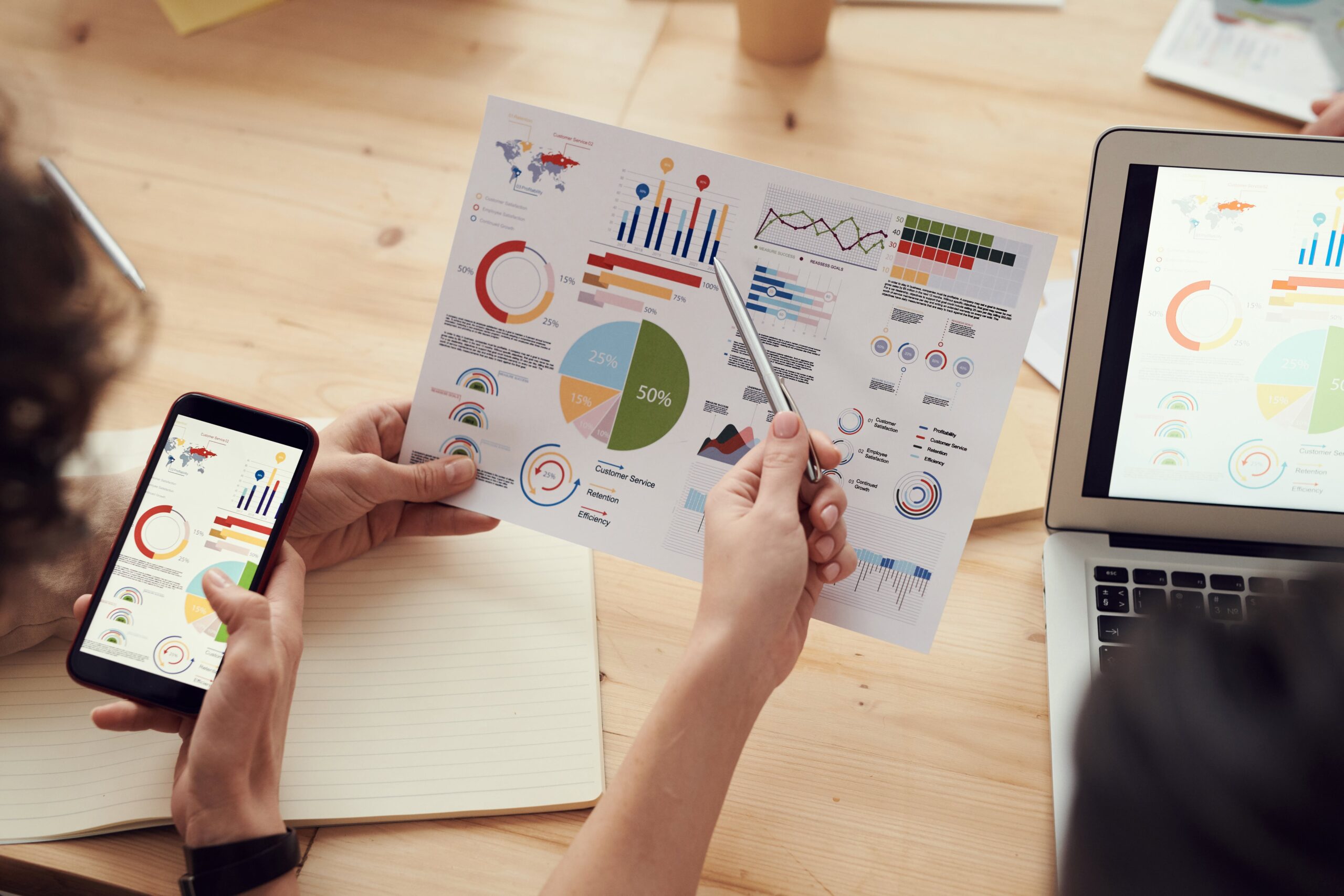
Companies can access massive consumer spending data in today’s data-driven world. This data provides invaluable insights into customer behaviour, preferences, and trends. However, harvesting this data is only the first step. The real opportunity lies in analysing this data and turning those insights into action. We will examine how businesses can harness consumer spending data to drive results.
Types of Consumer Spending Data
Businesses have access to various important categories of consumer spending information nowadays. We’ll look at practical methods for utilizing consumer spending information to produce tangible business outcomes.
1. Point of Sale (POS) Data
POS data offers transaction-level information on things purchased, costs paid, and other things. Detailed information on purchases made by representative consumer panels is available through household panel data from panel businesses. This provides information on purchase frequency, brand preferences, and basket composition. These retail-powered utility solutions make running their daily operations easier for the company.
2. Credit/debit card transactions
Transaction data from credit and debit cards offers priceless insight into general consumer purchasing trends. Through analysis, this data provides insights into the categories, brands, goods, and services that see increases or decreases in spending. It is also possible to understand spending variances based on geography and demographics. Market sizing, demand forecasting, identifying growth opportunities, and competitive benchmarking are all aided by this data.
3. Mobile Applications Data
Numerous behavioural and contextual data about clients are available through mobile apps. Metrics related to usage and engagement provide insights into the frequency of app interactions, duration of sessions, preferred content and features, and uptake of new features. Marketers can discover high-value user segments based on app behaviors and customize their experiences. Technical app data on performance, crashes, and mistakes makes optimising and developing the app over time more accessible.
4. Social Media Platforms Data
Social media sites are now filled with opportunities for user discussions and opinions. Information about customer interests, brand perceptions, product experiences, new trends, and market innovations can be obtained through social listening. The extraction of themes from unstructured material at scale is made possible by text analytics and natural language processing. Social data improve models of customer segmentation. Social analytics facilitate the identification of unfulfilled demands and new growth prospects.
5. Household Panel Data
Household panel data offers in-depth insights by recording specific purchase behaviours of representative consumer panels. Spending at the stock-keeping unit (SKU) level across merchants is shown by this data, highlighting granular trends such as brand switching, price elasticity, and market share. Panels allow monitoring of how new items, messages, and promotions are received. Marketers can pinpoint customer requirements and maximise interaction by comprehending the home purchasing experience.
6. Email and Coupon Data
Email and coupon redemption data reveal response rates to campaigns and promotional offers. Data on the redemption of coupons and emails offers priceless insights into the effectiveness of promotional campaigns. Email engagement levels can be ascertained by monitoring open and clickthrough rates, which also facilitates the improvement of subject lines, content formatting, sender information, and delivery frequency and timing.
7. Web Browsing and Search Data
Search and web surfing patterns provide a wealth of information about the interests and intentions of customers. Customers’ navigation and use of a website can be inferred from analytics on site traffic sources, pageviews, on-site search keywords, content consumption, downloads, and conversions. Throughout the visitor journey, marketers can pinpoint pain points to eliminate and engagement areas to optimise.
Analysing and Interpreting the Data
A wealth of information can be gathered from consumer spending data, which offers a comprehensive picture of consumer preferences, purchasing trends, and general behaviour. Every click, purchase, and interaction in the digital age—where transactions are increasingly online—leaves a digital trail. Companies who understand how important it is to use this data can strategically position themselves to meet the changing wants of their clientele. Let us look into the way companies can harness consumer spending data effectively.
Gathering and Combining Data
To properly utilise consumer spending data, a robust infrastructure for data collection must be implemented first. This entails collecting data from various touchpoints, including social media interactions, in-store purchases, internet transactions, and customer service encounters. To get a complete picture of client behaviour, it is essential to integrate this data from many sources.
Gathering and integrating data can be streamlined by putting Customer Relationship Management (CRM) and advanced analytics solutions into place. These solutions offer a centralised platform for data storage and analysis in addition to automating the process of gathering data.
Divide the Market for Focused Promotion
The next stage is to segment clients according to their spending patterns after collecting and merging data. Thanks to this segmentation, businesses can develop focused marketing efforts that cater to particular customer segments.
For instance, discounts or promotions linked to a specific product category may be directed toward customers who often buy that type of goods.
Geographical location, seasonal variations, and demographic characteristics can also be used to segment a market. Businesses can increase the conversion rate by delivering more relevant and personalised marketing messages to distinct customer segments based on their understanding of their unique preferences.
Customisation to Improved Consumer Experiences
Businesses can provide customers with individualised experiences using consumer spending data. Companies can recommend goods and services that suit each consumer’s unique interests by examining previous purchases and preferences. This degree of customisation builds client loyalty and improves the consumer experience.
An online store could provide a smooth and customised shopping experience by using consumer spending data to offer related products based on past purchases. Not only do personalised recommendations improve customer satisfaction, but they also raise average order values and conversion rates.
Using Predictive Analytics to Forecast Trends
Using consumer spending data can help predict future trends and assist businesses in understanding present customer behaviour. Using past data, predictive analytics finds trends and forecasts future customer behaviour confidently. This can be extremely helpful for companies trying to keep ahead of industry trends and make proactive strategy adjustments.
For instance, a fashion store examining expenditure data might detect a seasonal increase in sales of a specific design or colour. Retailers can plan marketing efforts, optimise their supply chain, and proactively stock inventory by utilising this information to satisfy anticipated demand.
Strategies for Retaining Customers
Consumer spending data helps attract new clients and keep hold of current ones. Businesses might apply focused retention strategies by recognising high-value clients and comprehending their purchasing habits. Customised messaging, exclusive offers, and loyalty programmes can be used to maintain the engagement and satisfaction of these key customers.
Additionally, expenditure data analysis can be used to spot early indicators of customer attrition. Businesses can proactively address problems and avoid losing essential clients by spotting shifts in purchasing patterns or a drop in engagement.
Improving the Offerings of Products and Services
Consumers ‘ spending patterns reveal what they are purchasing and what they are not. This data can help improve and broaden the range of goods and services available. Businesses can innovate and customise their goods to suit client preferences better by identifying holes in the market or areas where customer wants still need to be fully addressed.
For example, spending data can indicate to an electronics merchant that their clients regularly buy a specific brand of headphones. This realisation can lead the store to investigate joint ventures with that brand or broaden its selection of headphones to meet the market demand.
Data Security and Compliance
Although using consumer spending data is very effective, it must be prioritised with data security and compliance. For the security and privacy of consumer data, businesses must abide by industry standards and data protection laws. Robust data encryption, access controls, and frequent audits are crucial elements of an all-encompassing data security plan.
Gaining explicit consent and transparently disclosing data usage policies is essential to developing customer trust. Consumers are more willing to admit when they have confidence that their data will be appropriately treated morally.
Conclusion
Companies gain significant advantages from efficiently utilising consumer purchasing data in today’s competitive world. The insights from consumer spending data enable businesses to make educated decisions and remain flexible in a changing market, from personalised marketing to predictive analytics.
Are you looking for another business article? Check out https://rousernews.com/5-ways-businesses-are-cultivating-customer-relationships/






